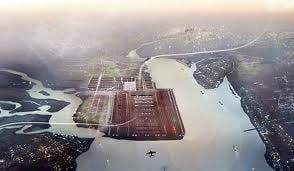‘Sticking plaster’ London airport plans will cost billions more than proposed

The Airports Commission has released a report today, showing that all 3 plans left on the table for the London airport expansion project will cost significantly more than their bids suggest.
The proposal for a second runway at Gatwick would cost £2 billion more than proposed, and the two alternative plans for Heathrow are predicted to cost £3-4 billion more, according to the official findings.
Of these plans, only the Gatwick expansion is in any way responsible in my view.
As I have written before (and most pilots agree), any form of expansion at Heathrow is a shortsighted plan. The airport is simply situated in the worst possible place for London from a safety perspective.
In order to reduce the ground speed required for flight and the length of runway required, aircraft take off and land into the wind. This means that, at Heathrow, aircraft are predominately flying low and slow over Greater London to land on the two westerly runways – as 80% of winds in the UK are westerly.
Heathrow, like most airports, has a mandatory 3 degree glide slope approach. This results in a descent of 300ft per mile on the ground – and given Heathrow’s position, means aircraft over the centre of our capital city are descending through 1500ft over our most populated areas.

Taking these factors into consideration and looking at London as a clock face, the worst possible position for an airport is therefore at 9 o’clock – where we have inadvertently built Heathrow. Far better to have aircraft descending and landing at airports in the 12 o’clock (Luton), 3 o’clock (as was the location for the proposed Thames Estuary airport) or 6 o’clock position (Gatwick) where their approaches will not affect such large areas of population.
Landing is the most critical stage from a safety perspective – accident data shows that the majority of incidents occur on the approach. This is when an aircraft is most vulnerable, flying low and slow.
Not to mention the greater pollution impact on one of the most densely-populated areas of Europe.
So that’s why expanding Heathrow any further would be irresponsible for our children and grandchildren. We need a viable airport for the next 100 years, not a sticking plaster solution.
Politically-speaking it would be a very brave decision to back an entirely new airport solution, rather than expanding what London has already, especially in the run up to next year’s UK general election. But with costs beginning to escalate already, it’s such a shame that the ‘Boris Island’ Thames Estuary airport was not considered a viable option. It was the only truly innovative and entrepreneurial project on the table.
Related content

My first year at PrivateFly

Private aviation’s military connections



